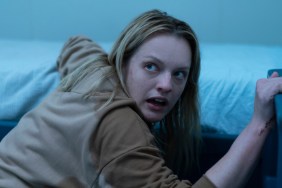
In 1941, RKO Pictures released Orson Welles Citizen Kane, which failed spectacularly at the box office but has gone on to be one of the most revered films ever made. In 1942, RKO was on the verge of collapse; they needed to make money, and fast. Enter Val Lewton, a Russian-American screenwriter/producer, hired by RKO to produce a series of low-budget horror films that could leach off the audiences which flocked to the classic Universal films. As stipulated by RKO, the films would have to come in under a budget of $150,000 and develop out of a given title. The first title they were given: Cat People.
The fear is palpable in Jacques Tourneurs 1942 now classic, Cat People. It permeates the dreamlike spaces in the film and the psyches of the characters that inhabit it. It’s the story of Irena (Simone Simon), a Serbian immigrant in New York who catches the eye of Oliver Reed (Kent Smith) one day at the zoo. Immediately striking up a conversation, Oliver begins to pursue her and shortly thereafter, they declare their love and marry. After their wedding, Irena still seems shy and frigid as she rebuffs Olivers attempts at intimacy. She reveals that King John of Serbia drove the wicked non-Christians out of her town, but the wisest survived in the mountains. While Irena doesnt reveal this to Oliver, she fears that she is a descendant of these people and continues to withdraw from him. As she withdraws, Oliver grows closer to his co-worker Alice (Jane Randolph), an all-American broad who seems to have his best interest at heart. Running out of options, Oliver pushes Irena into therapy to cure her of her worries. Soon, Alice begins to feel a presence stalking her, as Irenas fear of what she will become if she is intimate with any man grows.
Shot over the summer of 1942, Cat People saved money by shooting on leftover sets from films like The Magnificent Ambersons and Fred Astaire musicals. Lewton and Tourneur made the most of their limited funds by utilizing a standard of low-budget horror, the idea of suggesting rather than seeing. Cat People also took on the styles of the time, imbuing the filming techniques with an air of film noir alongside elements of the already popular German Expressionism. While German Expressionism was rampant in horror films, Cat People was one of the first to imbue its storyline with Freudian analysis, elevating the metaphor of the monsters and introducing mainstream audiences to the concept of the repressed. From the outset, Cat People feels like a dream, or more accurately, a nightmare. While some of the dated elements and dialogue in service of plot (i.e. Oliver and Irenas two-date courtship), it feels more surreal than your typical film of that era.
Cat People added to its lore by subverting tropes and turning conventions on their heads. The film features complicating intimate and romantic relations throughout by putting the onus on female sexuality as a central plot point. From Olivers almost predatory leering and pursuit of her on their walk from the Zoo, Irena is coy and proper until she takes the initiative to invite him for tea. Throughout these scenes, Irena and Oliver stroll through the streets in the daytime, brightly lit as they play at falling in love. Once they marry and the distance grows as Irena becomes more afraid of herself, the lighting darkens and so does she. The lighting often frames Irena in darkness and begins to visually separate her from the other characters as she begins to change. She is becoming more aware of her nature and more fearful of herself.
The screenplay by DeWitt Bodeen also works to cast Irena as the Other. While the characters have fairly standard classic genre dialogue, Irena refers to her perfume as living, being more comfortable at night and enjoying the roar of the lions, which she can hear from her apartment. The other characters appear to ignore these statements as quirks Irena is different, new, decidedly un-American. She is tuned to a frequency they arent and the audience sees that. She is the most alive character in the film and as she begins to change, the audience cannot help but change with her.

The most famous sequences in the film involve the stalking of Alice. Of course, the stalking of an attractive woman is not uncommon in a horror film, but these are earlier, more effective examples which have inspired countless imitators. Separating from Oliver one evening, Alice walks a short distance, but feels she is being followed. Though Alice isnt the protagonist of the film, we feel her dread. She seems to be covering only a short distance, but Tourneur plays again with the lighting and shadows, reinforcing the dreamlike quality. We take the perspective of Alice, who searches frantically in multiple directions as something seems to be following her. The second instance of stalking sees Tourneur ratcheting up the tension by having something in the shadows growl at Alice, whos treading water in the middle of a pool. Only, a clam Irena emerges from the darkness. The utilization and of such darkness in both scenes make them far more effective than the run of the mill B-movie.
Cat People works as an effective and evocative thriller, but the tension of it hinges on the most vulnerable parts of us, wanting to be accepted and fearing rejection. Each of the characters asks for acceptance in their own way, but it is Irenas story. Similar to Frankensteins monster eliciting sympathy (particularly in the Universal Studio version), Irena has done nothing wrong. Her monstrosity is through her lineage, something hereditary that she has no control over. Irena cannot physically be with the man she loves precisely because she loves him; because consummating their relationship could put him in physical danger.
Ultimately, Irena is rejected by her husband and by everyone else she has come to know. Cat People offers an emphatic look at a woman who lived and died with fear. She was scared of her past, her present and her future. With no one to help or understand her, Irena loses her dream of a normal life, and while the world may be safer without her in it, its certainly duller.
—
Alexandra West is a freelance horror journalist who lives, works, and survives in Toronto. Her work has appeared in the Toronto Star, Rue Morgue, Post City Magazine and Offscreen Film Journal. In December 2012, West co-founded the Faculty of Horror podcast with fellow writer Andrea Subissati, which explores the analytical side of horror films and the darkest recesses of academia.









